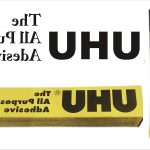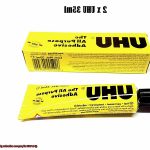Welcome to our blog post all about adhesives and silicone.
Ever wondered which tape sticks best to silicone? You’re in the right place.
Silicone is a super cool material used in tons of industries, from medical devices to electronics. But its smooth and non-porous surface can make it tricky to find an adhesive that really sticks.
In this article, we’ll dive into different types of adhesives that work well with silicone. We’ll give you the lowdown on which adhesive tape is the perfect match for silicone.
Stick around and let’s find out.
Adhesive Tapes That Stick to Silicone
Contents
- 1 Adhesive Tapes That Stick to Silicone
- 2 Silicone Adhesive Tape
- 3 Acrylic Adhesive Tape
- 4 Polyimide Tape
- 5 Polyester Tape
- 6 Factors to Consider When Selecting an Adhesive Tape for Silicone
- 7 Preparing the Surface Before Applying the Tape
- 8 Testing the Bonding Process Before Use on a Larger Scale
- 9 Conclusion
Silicone, renowned for its non-stick properties, poses a challenge when it comes to finding adhesive tapes that can effectively bond to it. But fret not. In this comprehensive guide, we’ll dive into the world of adhesive tapes designed specifically to adhere to silicone surfaces. From the automotive and electronics industries to medical and aerospace fields, understanding these adhesive tapes will empower you to make informed decisions when selecting the perfect tape for your needs.
Silicone Adhesive Tape:
With its exceptional adhesion and flexibility, silicone adhesive tape reigns supreme as the go-to solution for bonding silicone surfaces. Crafted with a unique silicone-based adhesive, this tape conquers sealing, masking, bonding, and insulation applications on silicone components. Its heat resistance and durability make it a must-have in various industries.
Acrylic Adhesive Tape:
Versatility meets effectiveness with acrylic adhesive tapes that form strong bonds with silicone surfaces. These durable tapes boast temperature resistance, ensuring long-lasting bonding capabilities. Before use, ensure compatibility between the specific acrylic adhesive tape and your silicone surface.
Polyimide Tape:
For applications demanding robust bonds with silicone, look no further than polyimide tapes. These heat-resistant wonders offer excellent electrical insulation properties. Prevalent in electronic devices and circuit board assembly, polyimide tapes are at the forefront of silicone bonding.
![]()
Polyester Tape:
Polyester tape is yet another high-temperature-resistant option compatible with silicone surfaces. Whether you need to bond or protect silicone in extreme environments, polyester tape is your trusty companion.
Silicone Adhesive Tape
Silicone adhesive tape is a remarkable solution that conquers the non-stick challenge of silicone surfaces. With its exceptional heat resistance, durability, and flexibility, it has become the go-to choice for various industries, including electrical, automotive, and medical. In this article, we will delve into the fascinating world of silicone adhesive tape, exploring its features, benefits, and the key factors to consider when selecting the right type for your specific application needs.
![]()
Features of Silicone Adhesive Tape:
- Unyielding Heat Resistance: Silicone adhesive tape excels in high-temperature environments, fearlessly withstanding extreme temperatures ranging from -100°C to +260°C (-148°F to +500°F). Its adhesive properties remain intact, ensuring reliable performance even in the hottest conditions.
- Indomitable Durability: Designed to endure harsh environments, this tape boasts exceptional resistance to chemicals, UV rays, moisture, and aging. It stands strong over time, providing reliable protection and maintaining its integrity.
- Bonding Brilliance: Silicone-based adhesive forms an unbreakable bond with silicone surfaces without leaving any residue upon removal. Its exceptional adhesion capabilities remain stable even under the most demanding conditions.
- Flexible Backing: The supple silicone backing effortlessly conforms to curved or irregular surfaces. This pliable nature allows for a secure bond while accommodating diverse shapes and contours.
Benefits of Silicone Adhesive Tape:
- Electrical Insulation Excellence: Silicone adhesive tape provides reliable electrical insulation, safeguarding wires, cables, and other components from potential damage or short circuits. Its high dielectric strength ensures the uninterrupted flow of electricity and guarantees safety.
- Sealing Supremacy: Harnessing the innate non-stick properties of silicone, this tape creates an impenetrable seal that shields sensitive areas from moisture, dust, dirt, and other contaminants. It locks out intruders, preserving the integrity of vital components.
- Unyielding Protection: Silicone adhesive tape acts as an impenetrable barrier against abrasion, impact, and harsh chemicals. It fortifies surfaces, defending against wear and tear, thereby extending the lifespan of equipment and components.
- Limitless Versatility: With a plethora of options available in terms of widths, thicknesses, and colors, silicone adhesive tapes cater to diverse requirements. Some tapes even offer additional features such as flame retardancy or weather resistance, ensuring suitability for specialized applications.
Selecting the Right Silicone Adhesive Tape:
When choosing silicone adhesive tape, consider the following factors:
- Temperature Range: Ensure the tape can withstand the intended temperature extremes.
- Surface Compatibility: Verify that the tape is suitable for bonding to your specific silicone surface.
- Application Requirements: Determine the necessary width, thickness, and additional features that align with your needs.
- Environmental Factors: Take into account factors such as humidity, chemical exposure, UV radiation, or outdoor elements when selecting a tape with enhanced properties.
Acrylic Adhesive Tape
This remarkable tape is specifically engineered to bond with silicone, offering a robust and long-lasting hold that will make your projects a breeze.
So, what sets acrylic adhesive tape apart from the rest? Let’s delve into the details. Firstly, this tape is crafted from a pressure-sensitive adhesive derived from acrylic polymers. This gives it exceptional adhesion properties, ensuring a secure bond with silicone surfaces. No more worries about peeling or loss of grip.
But wait, there’s more. Acrylic adhesive tape also boasts impressive resistance capabilities. It can withstand high temperatures, moisture, and even UV radiation. Whether you’re indoors or outdoors, in scorching heat or freezing cold, this tape will stay put, keeping your silicone surfaces sealed and secure.
Now, let’s explore the myriad uses of acrylic adhesive tape on silicone. The possibilities are endless. Seal joints and gaps, bond different components together, or mount objects onto silicone surfaces – the choice is yours. It’s no wonder industries like automotive, electronics, construction, and medical rely on acrylic adhesive tape for their silicone-related projects.
When selecting the ideal acrylic adhesive tape for your silicone surfaces, consider specific application requirements, surface conditions, and desired adhesion levels. Different types and brands of acrylic adhesive tapes offer varying performance characteristics. Consulting with manufacturers or suppliers will help you find the perfect fit for your needs.
Polyimide Tape
Polyimide tape, also known as Kapton tape, is a remarkable adhesive tape that has revolutionized bonding with silicone surfaces. It is the superhero tape you’ve been waiting for – tough, reliable, and always ready to save the day. But what makes polyimide tape so special? Let’s dive into the world of this extraordinary tape and explore its exceptional properties.
- Temperature Resistance: Polyimide tape is like a fearless warrior in the face of scorching heat. With an impressive temperature resistance of up to 260°C (500°F), it can withstand extreme temperatures without melting or degrading. Whether you’re working on electronic devices or soldering components, polyimide tape fearlessly handles the heat and ensures your projects stay intact.
- Electrical Insulation Properties: Imagine having a superhero that not only bonds but also insulates electrical components with precision. Polyimide tape possesses excellent electrical insulation properties, making it an ideal choice for applications where electrical conductivity needs to be controlled. It acts as an additional layer of protection, ensuring smooth current flow without interference.
- Chemical Resistance: In industries where exposure to chemicals and solvents is unavoidable, polyimide tape emerges as the ultimate shield against corrosive substances. Its chemically inert nature means it remains unaffected when in contact with various chemicals, safeguarding your projects from degradation and damage.
- Easy Application: Say goodbye to tedious and wasteful application processes. Polyimide tape is designed for easy application with minimal waste. It comes in various thicknesses and widths, catering to your specific needs. Simply cut it into your desired shape, stick it on, and watch it effortlessly conform to silicone surfaces.
- Residue-Free Removal: Bid farewell to sticky residues that haunt your projects long after tape removal. Polyimide tape prides itself on leaving no trace behind. Its highly conformable nature ensures a tight bond with silicone surfaces during application, but when it’s time to remove the tape, it peels off effortlessly, leaving no sticky remnants to clean up.
Polyester Tape
Polyester tape, crafted from polyester film and coated with a silicone adhesive, is a remarkable adhesive tape that excels at sticking to silicone surfaces. This superhero of the adhesive world conquers the challenge of bonding with silicone thanks to its silicone adhesive, forming a bond that can withstand even the harshest conditions.
First and foremost, polyester tape’s adhesive powers are unmatched when it comes to sticking to silicone surfaces. Its strong and reliable bond ensures that your tape stays in place, providing peace of mind even when things heat up.
Speaking of heat, polyester tape is a champion of temperature resistance. It fearlessly withstands high temperatures like a boss, making it the perfect choice for applications where heat resistance is essential. Whether you’re in the aerospace industry or dealing with automotive components, polyester tape has got your back.
Polyester tape is also resistant to chemicals and solvents. So if your silicone surfaces are constantly exposed to oils, fuels, or other chemicals, don’t worry about your tape losing its grip. Polyester tape can handle it like a pro.
And let’s not forget its electrical insulation superpowers. Polyester tape acts as a protective barrier against electrical current, shielding your precious components from damage or short circuits. When it comes to electrical applications where insulation is crucial, polyester tape is the way to go.
Factors to Consider When Selecting an Adhesive Tape for Silicone
When it comes to selecting an adhesive tape for silicone, several factors should be carefully considered to ensure a strong and reliable bond. By taking these factors into account, you can overcome the challenges of adhesion and achieve exceptional results.
- Compatibility: Silicone has unique surface properties that can make adhesion challenging. Look for tapes specifically designed for silicone bonding, labeled as “silicone adhesive” or “silicone compatible.” These tapes have formulations that adhere well to silicone surfaces, ensuring a reliable bond.
- Temperature Resistance: Silicone materials often face high temperature environments. Choose a tape with a high-temperature resistance rating, typically above 300°F (150°C), to ensure it can withstand extreme temperatures without losing its adhesive properties.
- Flexibility and Conformability: Silicone is known for its flexibility and ability to conform to various shapes and surfaces. Select an adhesive tape that can flex and conform easily without sacrificing bond strength. This will ensure better adhesion on curved or irregular surfaces.
- Chemical Resistance: Consider the exposure of your silicone components to harsh chemicals, oils, or solvents. Choose a tape with excellent chemical resistance properties to ensure durability in such environments.
- Release Liner: Some release liners may leave residue or cause difficulties during application on silicone surfaces. Opt for tapes with easy-to-remove release liners that do not leave any residue behind.
- Application Method: Different tapes may require different application techniques, such as pressure-sensitive adhesion or heat activation. Consider the available resources and equipment when choosing a tape that aligns with the application method.
- Intended Use: Assess the specific requirements of your project or application. Factors such as expected bond lifespan, repositionability needs, or desired aesthetics may influence your choice of adhesive tape for silicone.
Preparing the Surface Before Applying the Tape
Just like a master chef prepares ingredients before creating a delicious dish, preparing the surface is crucial when applying adhesive tape to silicone surfaces. In this article, we will guide you through the essential steps of surface preparation, ensuring a strong and long-lasting bond. Get ready to become an expert in adhesive tape application.
Step 1: Clean it up:
Start by giving your silicone surface a thorough cleaning. Use a mild detergent or soap with water to eliminate dirt, dust, oils, or residues that may linger. Avoid harsh chemicals or solvents that can harm the silicone. Rinse with clean water and ensure the surface is completely dry before moving forward.
Step 2: Prime time (if needed):
Depending on the condition of your silicone surface, you might require a primer designed specifically for silicone materials. The primer acts as a bonding layer between the silicone and the tape adhesive, enhancing adhesion. Apply the primer according to the manufacturer’s instructions and allow it to dry completely before proceeding.
Step 3: Smooth it out (if necessary):
If your silicone surface is textured or uneven, consider using a silicone-based filler or sealant to level it out. Apply the filler or sealant as directed and ensure it’s fully cured before moving forward.
Step 4: Choose the right tape:
Now that your surface is clean, primed (if needed), and leveled (if necessary), it’s time to select the perfect adhesive tape for your silicone application. Look for tapes specifically designed for use on silicone surfaces to ensure maximum compatibility and adhesion.
Step 5: Apply with care:
When applying the tape, avoid excessive stretching or pulling. Instead, gently press down to ensure good contact with the silicone surface. For an extra-strong bond, use a roller or a smooth, flat object to apply even pressure and eliminate air bubbles.
Step 6: Give it time:
Allow sufficient time for the adhesive to bond with the silicone surface before subjecting it to stress or movement. Curing times may vary depending on the specific adhesive tape, so refer to the manufacturer’s instructions for guidance.
Step 7: Inspect and maintain:
Regularly inspect the tape for any signs of peeling, lifting, or deterioration. If any issues arise, address them promptly by reapplying or replacing the tape as necessary.
Testing the Bonding Process Before Use on a Larger Scale
Testing the bonding process before using adhesive tape on a larger scale is a critical step in ensuring successful outcomes. Thorough testing allows for the evaluation of effectiveness, durability, and reliability of the adhesive tape in bonding silicone materials. By assessing adhesion strength, testing under various conditions, evaluating long-term durability, and compliance with specific requirements, you can achieve the desired results.
Assessing adhesion strength involves applying the adhesive tape to a small sample of silicone material and conducting peel or shear tests. These tests measure the force required to peel off the tape or the resistance to shearing forces, determining the strength of the bond.
Testing under various conditions is essential as adhesive performance can be influenced by factors such as temperature, humidity, chemicals, and UV light exposure. Subjecting bonded samples to different conditions allows for an evaluation of how well the adhesive tape performs in each scenario, aiding in selecting an adhesive tape suitable for specific application requirements.
Long-term durability evaluation is crucial to ensure that the bond remains strong and reliable over an extended period. Cyclic loading or accelerated aging tests can simulate real-world conditions and determine if the adhesive tape withstands demanding applications.
Compliance with specific requirements is important when considering medical or food-grade standards. Testing ensures that the adhesive tape fulfills these requirements, providing safe and reliable bonding in specialized environments.
0JHlrvJOmC8″ >
Conclusion
In conclusion, the quest for an adhesive tape that sticks to silicone may seem daunting due to its smooth and non-porous surface. But fear not. There are specialized tapes out there that have mastered the art of bonding with silicone.
Enter silicone adhesive tape – the superhero of silicone bonding. With its exceptional adhesion, flexibility, heat resistance, and durability, it’s the go-to solution for industries like electrical, automotive, and medical. This tape means business.
But wait, there’s more. Acrylic adhesive tape steps up to the plate as another formidable option. It boasts impressive adhesion properties and can brave high temperatures, moisture, and even UV radiation. From automotive to electronics to construction – this tape is a versatile warrior.
Let’s not forget about polyimide tape, also known as Kapton tape. This stuff is like magic when it comes to bonding with silicone surfaces. Its temperature resistance is off the charts, it offers electrical insulation properties, and it can be applied and removed without leaving any residue behind. Electronic devices and circuit board assembly rejoice.
Last but not least, we have polyester tape – a high-temperature-resistant champion that forms an unbreakable bond with silicone surfaces. Not only does it resist chemicals and solvents like a pro, but it also provides electrical insulation properties for added peace of mind.
Now that you know your options, how do you choose? Consider factors like compatibility with silicone materials, temperature resistance requirements, flexibility needs – you name it. Each application has its unique demands.
But remember: preparation is key. Cleanse that silicone surface with mild detergent or soap (no harsh chemicals allowed.). Prime or level if necessary for maximum adhesion power. And don’t forget to test on a small scale before going all-in – peel tests and shear tests will reveal the strength of your bond.
So there you have it – armed with these tips and tricks, finding the perfect adhesive tape for your silicone needs is within reach.





